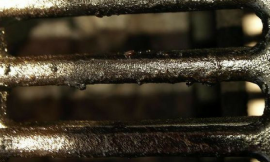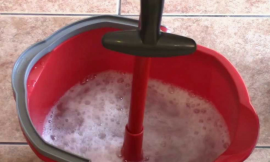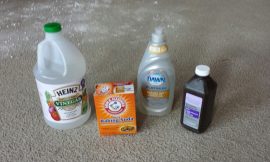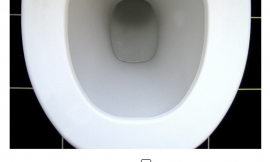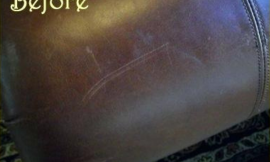
Did you know that almost 70% of bathrooms harbor some form of mold? This common household problem is not only unsightly, but it can also present health risks to you and your family. If you’re tired of staring up at those dark, fuzzy patches on your bathroom ceiling or spotting the creeping stains on your walls, you’re in the right place! In this guide, we’ll walk you through effective strategies for removing mold from bathroom ceilings and walls, ensuring a cleaner and healthier space. Let’s dive into the world of mold removal and reclaim your bathroom!
Understanding Mold Growth in Bathrooms
Mold thrives in environments with high humidity and moisture, making bathrooms particularly susceptible. When warm, moist air from showers or baths comes into contact with cooler surfaces, it condenses, creating the wet conditions mold loves. Additionally, leaky pipes or poor drainage can contribute to ongoing moisture issues.
In bathrooms, you’re likely to encounter several common types of mold. These can include black mold (Stachybotrys), which is notorious for its dark color and potential health risks, as well as other varieties like Aspergillus and Cladosporium, which can appear in various colors and often thrive in damp areas.
So, how do you know if mold is present in your bathroom? Look for signs such as dark spots on walls or ceilings, a musty odor, and visible discoloration on grout or caulk. These indicators suggest that mold is either growing or has been present for some time.
Essential Safety Precautions
Before tackling mold removal, it’s crucial to prioritize safety. Personal protective equipment (PPE) should not be overlooked. Always wear gloves, masks, and goggles to shield yourself from mold spores and cleaning chemicals. These items help minimize exposure and keep you safe throughout the process.
Ventilation is essential when dealing with mold. Open windows or use fans to ensure that air circulates, which can reduce the risk of inhaling contaminated air. If you have underlying health conditions, such as asthma or allergies, consider consulting a healthcare professional before beginning any mold removal tasks.
Preparing for Mold Removal
Preparation is key to an effective mold removal process. First, gather the necessary tools and materials. You’ll need a scrub brush, sponges, buckets, and your chosen cleaning solutions.
Next, identify and isolate the affected areas. This might involve shutting off your water supply and ensuring that the area is dry enough to work in. If possible, section off the space to prevent mold spores from spreading to other parts of your home.
When it comes to cleaning solutions, decide whether you’ll opt for DIY options or commercial products. Natural solutions like vinegar or baking soda can be effective for small areas, but more persistent issues might require specialized mold removal products available at stores.
Step-by-Step Mold Removal Process
Cleaning mold from bathroom ceilings involves specific techniques to ensure thorough removal. Start by dampening the area with a mixture of water and a cleaning solution. Then use a scrub brush to gently remove the mold, being careful not to disturb it too much, which can release spores into the air.
For treating walls and grout, a similar approach applies. Apply your cleaning solution and let it sit for a few minutes to penetrate the mold. Scrub the area vigorously with a brush to lift the mold away, and wipe down with a cloth after treatment.
If you encounter persistent stains that don’t improve with regular cleaning, consider more aggressive approaches. This might include using a stronger commercial cleaner or even replacing caulk and grout in more severe cases.
Preventing Future Mold Growth
Maintaining low humidity levels in your bathroom is essential for preventing mold growth. Consider using a dehumidifier or an exhaust fan, especially during and after showers, to help reduce moisture in the air.
Regular cleaning and inspection can also help keep mold at bay. Schedule time each week to clean surfaces and check for any leaks or wet spots that could encourage mold growth.
Don’t underestimate the importance of proper bathroom ventilation and air circulation. Ensure that your bathroom is well-ventilated, which not only helps prevent mold but also promotes overall air quality.
When to Call a Professional
Sometimes mold issues can escalate beyond DIY solutions. Signs that may indicate the need for professional help include extensive mold growth, water damage, or if the mold returns even after thorough cleaning efforts.
Be aware that DIY mold removal can carry risks, especially if you’re dealing with toxic molds or if the area affected is large. Professionals have the training and tools to handle these situations safely.
If you decide to call in the experts, you can expect thorough mold remediation services. This typically includes inspection, removal of contaminated materials, and methods to prevent future growth.
Conclusion
In summary, removing mold from your bathroom ceiling and walls doesn’t have to be an overwhelming task. By understanding the causes, taking the right precautions, and following a systematic removal process, you can effectively tackle this common issue. With commitment to maintenance and prevention, you can keep your bathroom mold-free for years to come! Ready to transform your bathroom into a mold-free haven? Grab your supplies, and let’s get started!







